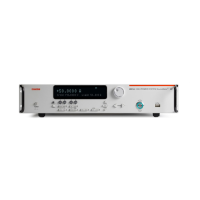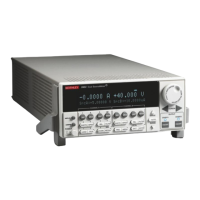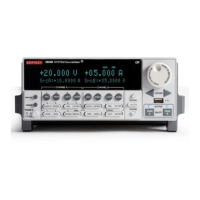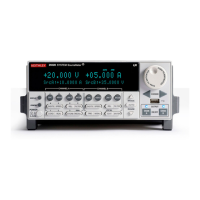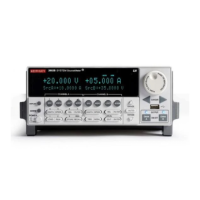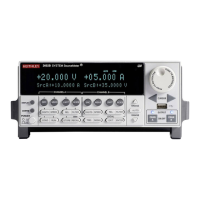Model 2657A High Power System SourceMeter® Instrument Reference Manual Section 7: TSP command reference
2657A-901-01 Rev. B/December 2012 7-53
When programmed to any mode except digio.TRIG_BYPASS, the output state of the I/O line is controlled by
the trigger logic, and the user-specified output state of the line is ignored.
Use of either digio.TRIG_SYNCHRONOUSA or digio.TRIG_SYNCHRONOUSM is preferred over
digio.TRIG_SYNCHRONOUS, because digio.TRIG_SYNCHRONOUS is provided for compatibility with the digital
I/O and TSP-Link triggering on other Keithley Instruments products.
To control the line state, set the mode to digio.TRIG_BYPASS and use the digio.writebit() and
digio.writeport() commands.
Example
digio.trigger[4].mode = 2
Sets the trigger mode for I/O line 4 to
digio.TRIG_RISING.
Also see
digio.trigger[N].clear() (on page 7-51)
digio.trigger[N].reset()
(on page 7-55)
digio.writebit()
(on page 7-58)
digio.writeport()
(on page 7-58)
Sweep operation
(on page 3-19)
a
digio.trigger[N].overrun
Use this attribute to read the event detector overrun status.
Type TSP-Link accessible Affected by Where saved Default value
Attribute (R) Yes Instrument reset
Digital I/O trigger N clear
Digital I/O trigger N reset
Recall setup
Not saved Not applicable
Usage
overrun = digio.trigger[N].overrun
overrun
Trigger overrun state (true or false)
N
Digital I/O trigger line (1 to 14)
Details
If this is true, an event was ignored because the event detector was already in the detected state when the
event occurred.
This is an indication of the state of the event detector built into the line itself. It does not indicate if an overrun
occurred in any other part of the trigger model or in any other detector that is monitoring the event.
Example
overrun = digio.trigger[1].overrun
print(overrun)
If there is no trigger overrun, the following
text is output:
false
Also see
digio.trigger[N].clear() (on page 7-51)
digio.trigger[N].reset()
(on page 7-55)
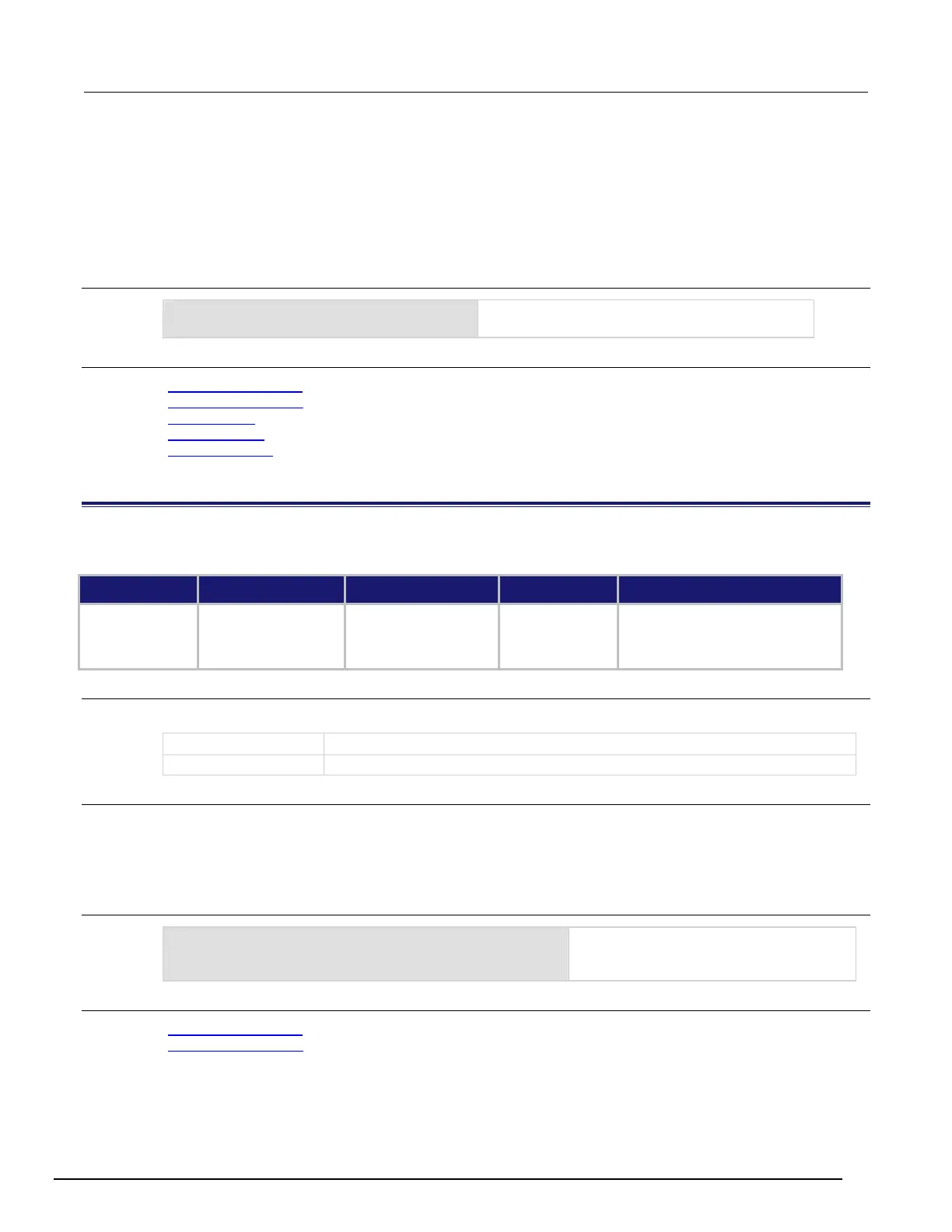